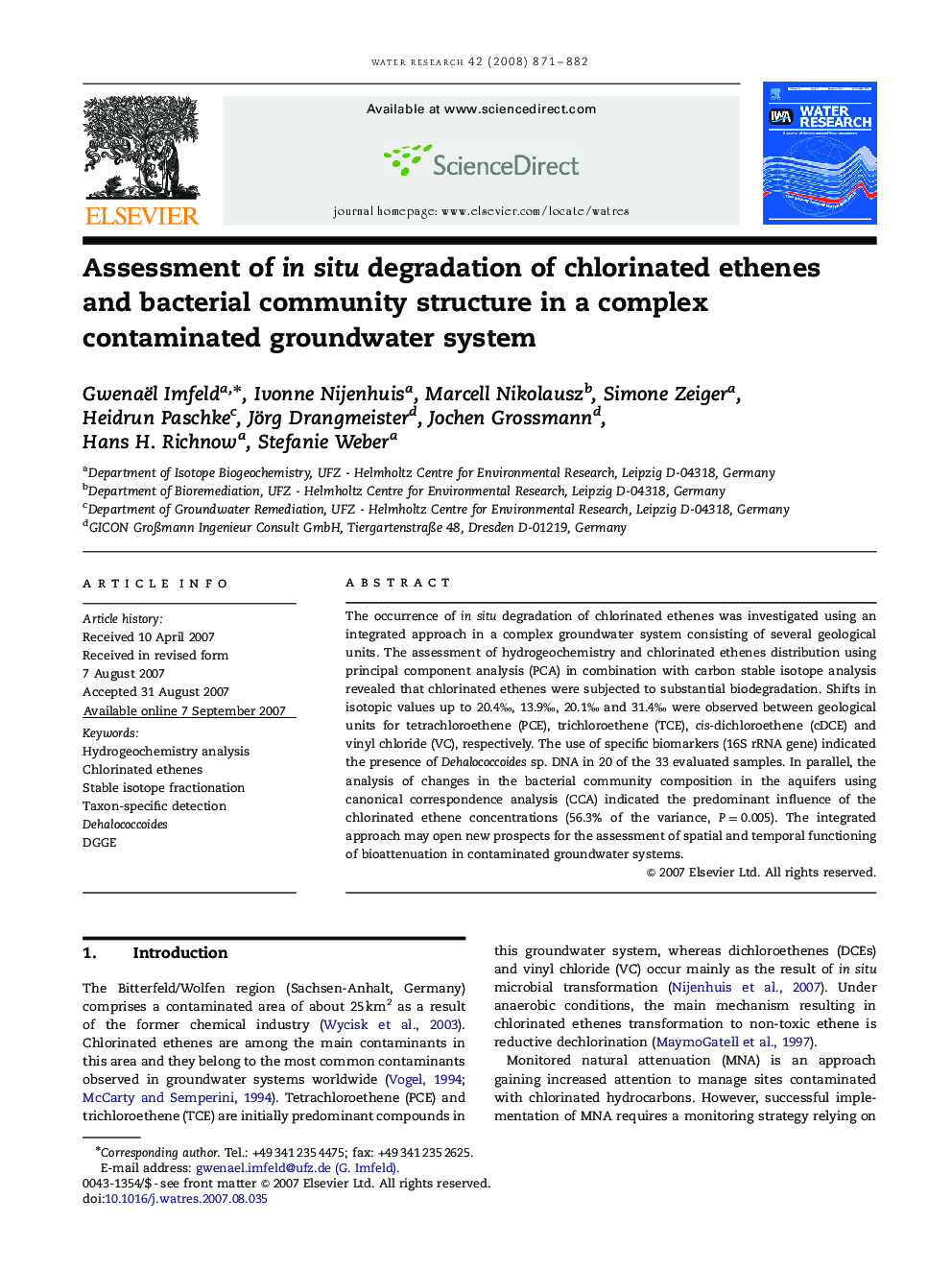| Article ID | Journal | Published Year | Pages | File Type |
|---|---|---|---|---|
| 4483718 | Water Research | 2008 | 12 Pages |
The occurrence of in situ degradation of chlorinated ethenes was investigated using an integrated approach in a complex groundwater system consisting of several geological units. The assessment of hydrogeochemistry and chlorinated ethenes distribution using principal component analysis (PCA) in combination with carbon stable isotope analysis revealed that chlorinated ethenes were subjected to substantial biodegradation. Shifts in isotopic values up to 20.4‰, 13.9‰, 20.1‰ and 31.4‰ were observed between geological units for tetrachloroethene (PCE), trichloroethene (TCE), cis-dichloroethene (cDCE) and vinyl chloride (VC), respectively. The use of specific biomarkers (16S rRNA gene) indicated the presence of Dehalococcoides sp. DNA in 20 of the 33 evaluated samples. In parallel, the analysis of changes in the bacterial community composition in the aquifers using canonical correspondence analysis (CCA) indicated the predominant influence of the chlorinated ethene concentrations (56.3% of the variance, P=0.005). The integrated approach may open new prospects for the assessment of spatial and temporal functioning of bioattenuation in contaminated groundwater systems.
